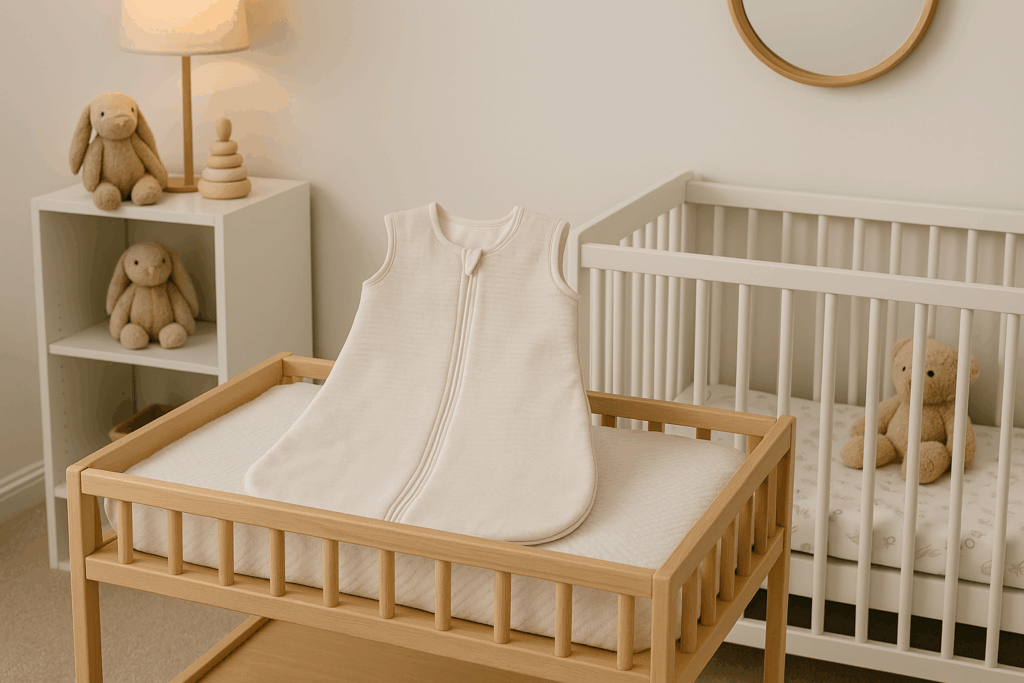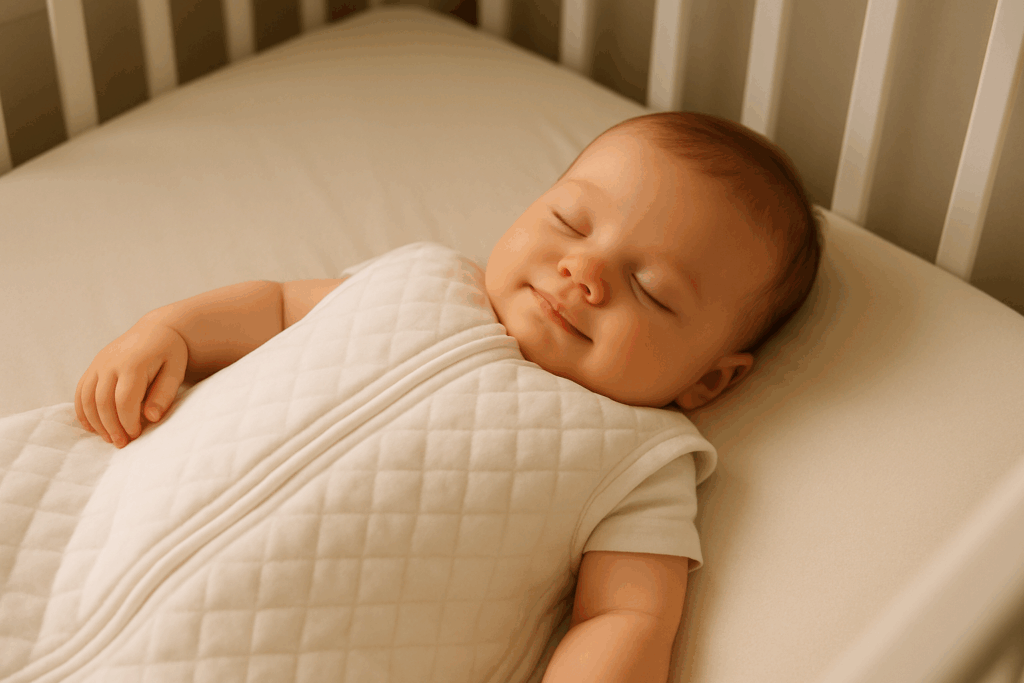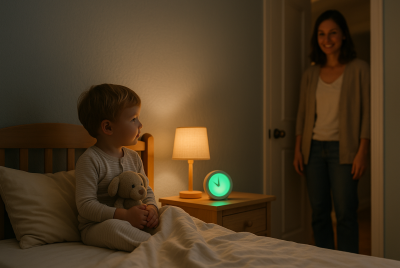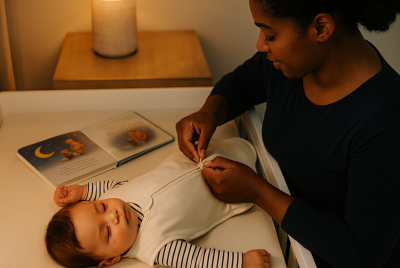How Long Do Babies Use Sleep Sacks? Complete Guide for Parents
We may earn a commission for purchases made using our links. Please see our disclosure to learn more.
If you’re a parent wondering how long babies use sleep sacks, you’re in the right place. Sleep sacks have become a staple for safe baby sleep, but knowing when to start and stop using them can be confusing. This guide will break down everything you need to know—from the newborn stage to toddler years—so you can help your little one sleep safe and sound.
What Is a Baby Sleep Sack?
Think of a baby sleep sack as a wearable blanket made just for little ones. Unlike loose blankets, which can pose a risk in the crib, sleep sacks are designed to keep your baby cozy and safe all night long. They zip up to gently cover your baby’s body and legs while leaving their arms free to move. This smart design means there’s no chance of tangled bedding or accidental covering of the face. You’ll find sleep sacks everywhere these days, and that’s because they’re practical, reliable, and give parents peace of mind.
Why Do Parents Choose Sleep Sacks?
There’s a good reason more and more families are choosing sleep sacks over traditional blankets:
- Safety: Loose blankets can increase the chance of Sudden Infant Death Syndrome (SIDS), but a sleep sack stays put, reducing that risk.
- Comfort: Babies can stretch, kick, and wiggle freely—without ever getting cold.
- Peace of Mind: Knowing your baby is snuggled up safely lets everyone in the house sleep a little easier.

How Long Do Babies Use Sleep Sacks?
The short answer? Most babies use sleep sacks from birth until about two years old, but every baby is different. The right time to transition depends on your child’s age, size, and development.
Age and Size Recommendations
- Newborns to 6 Months:
Sleep sacks can be used from day one, especially after the swaddling phase. Some sleep sacks are designed specifically for newborns, while others are for older infants. - 6 Months to 18 Months:
This is the prime age for sleep sacks. At this stage, babies have outgrown swaddles but are still too young for loose bedding. Most sleep sacks are available in sizes that fit up to 18 months. - 18 Months to 2 Years (and beyond):
Many toddlers love the comfort of their sleep sack, so it’s fine to continue using one as long as your child fits. Some brands offer extra-large sizes for bigger toddlers.
Quick Reference Table: Sleep Sack Age Guidelines
| Age Range | Typical Sleep Sack Size | When to Transition |
| 0–6 months | Small / Newborn | Outgrow swaddle |
| 6–12 months | Medium | Rolling over |
| 12–18 months | Large | Showing readiness |
| 18–24+ months | X-Large/Toddler | Outgrows sack/wants blanket |
Signs Your Baby Is Ready to Transition
There’s no set rule for when to stop using a sleep sack, but these signs can help:
- Your child consistently removes the sleep sack overnight.
- They start showing interest in regular blankets.
- Your little one can unzip or climb out of the sleep sack.
- The largest size is getting tight or restrictive.
Most experts recommend keeping your child in a sleep sack until they’re at least 18 months old, or until they’re ready to safely handle loose bedding.
Are Sleep Sacks Safe for All Ages?
In general, sleep sacks are safe for young children and babies. However, always follow the manufacturer’s guidelines regarding age and size. Never use a sleep sack that is excessively big (which makes it more likely that someone will slip inside) or too small (which restricts mobility).
Watch how the older toddlers move. When your child starts to crawl out of their crib, you should reassess any wearable bedding for their safety.
How to Choose the Right Sleep Sack
With so many options, how do you pick the best one? Here’s what matters most:
Material and Seasonality
- Cotton: Breathable and perfect for year-round use.
- Fleece or Microfiber: Warm for winter but can overheat in summer.
- Bamboo: Soft and naturally temperature-regulating.
When choosing a sleep sack, it’s also smart to consider overall skin safety for your baby, especially if they’ll be exposed to sunlight during naps or morning feeds by the window. If you’re concerned about keeping your little one’s skin protected, check out this helpful resource on baby UV protection for tips and recommended products.
Look for “TOG” ratings—the higher the TOG, the warmer the sack. For summer, go with a 0.5–1.0 TOG. For winter, choose 2.5 TOG or higher.
Size and Fit
A sleep sack should fit snugly around the neck and arms but be roomy enough at the bottom for baby’s hips and legs to move. Always check the size chart for weight and length, not just age.
Scientific Research: What the Experts Say About Sleep Sacks
When it comes to safe infant sleep, research consistently shows the benefits of using sleep sacks over traditional loose blankets. Here’s what trusted medical sources and hospital-based studies have found:
Sleep Sacks and SIDS Prevention
According to the Cleveland Clinic’s comprehensive review on sleep sack safety, wearable blankets are as safe—or even safer—than other types of crib bedding. Their findings highlight that sleep sacks help lower the risk of Sudden Infant Death Syndrome (SIDS) by preventing loose bedding, which can cause suffocation or entanglement. For new parents, this scientific endorsement brings peace of mind and practical guidance for safe sleep routines.
Hospital Study: Improved Safe Sleep Compliance
A detailed hospital-based quality improvement study on safe infant sleep practices demonstrated that introducing sleep sacks led to a dramatic boost in sleep safety. In this real-world setting, “perfect sleep” compliance jumped from just 41.9% to an impressive 67.3% after sleep sacks were provided. The same study showed that babies were more consistently placed on their backs (up to 98.1%), and incidents involving extra bedding dropped sharply. These results underline the real-life effectiveness of sleep sacks in protecting babies while they sleep.
By following these science-backed recommendations, parents can confidently choose sleep sacks as a safe, reliable part of their baby’s bedtime routine.
Top Sleep Sacks Parents Love (Amazon Recommendations)
Ready to shop? Here are some best-selling sleep sacks with rave reviews:
- HALO SleepSack Wearable Blanket
The original and still a favorite, this sack is soft, affordable, and comes in a variety of fabrics. - Burt’s Bees Baby Beekeeper Sleep Sack
100% organic cotton and gentle on sensitive skin, parents love its durability and cute prints. - Kyte BABY Unisex Sleep Sack
Made with eco-friendly bamboo, this sleep sack is buttery soft and breathable, perfect for all seasons. - Simple Joys by Carter’s Unisex Sleepbag
Affordable, convenient, and available in packs—great for busy parents who want a few on hand. - Woolino 4 Season Baby Sleep Sack
This premium pick uses merino wool to naturally regulate temperature year-round, fitting babies up to 2 years old.
(Product links are examples—always check latest reviews and sizes before buying.)

Tips for a Smooth Transition Out of Sleep Sacks
Worried about your baby adjusting to life without a sleep sack? You’re not alone. Here’s how to make the switch as easy as possible:
- Start Slow:
Let your child nap with a blanket during the day before using one overnight. - Choose a Transitional Item:
A special stuffed animal or “lovey” can comfort your little one. - Maintain Your Routine:
Stick to the same bedtime steps so your child feels secure. - Dress for the Weather:
Once you drop the sleep sack, make sure your baby is still dressed warmly enough for sleep. - Monitor Closely:
During the first few nights, check in to be sure your baby isn’t tangled or uncomfortable.
Conclusion
How long do infants wear sleep sacks, then? From birth to roughly two years old, or even longer if your toddler still adores theirs, sleep sacks are generally safe and useful for families. The secret is to prioritize safety and pay attention to your baby’s indications. You can find the ideal sleep sack for every stage thanks to the abundance of warm and attractive options available.
Keep in mind that your baby’s sleep requirements will fluctuate, but if you are patient and give them additional hugs, they will sleep soundly regardless of what they are wearing to bed.
FAQs
1. Can newborns sleep in a sleep sack?
Absolutely! Many sleep sacks are designed specifically for newborns and are a safer alternative to loose blankets from day one.
2. Is there a certain age at which sleeping bags should be discontinued?
Most parents transition out of sleep sacks around age two, but some kids use them up to age three. The key is safety and comfort.
3. What distinguishes a sleep sack from a swaddle?
Swaddles wrap arms and restrict movement; sleep sacks keep arms free while covering the legs and body. Once a baby rolls, switch to a sleep sack.
4. How do I know my baby is ready for a blanket?
If your child is at least 18 months old, can move blankets safely, and shows interest, you can consider introducing one.
5. Are weighted sleep sacks safe?
Most experts recommend avoiding weighted sleep sacks for infants, as they may increase the risk of overheating or restricted movement. Always check with your pediatrician.




